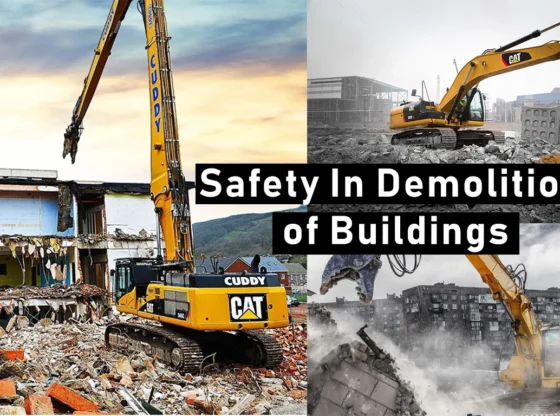Best Practices for Demolition Safety and Efficiency
Key Takeaways:
- Importance of thorough planning and risk assessment.
- Essential protective gear and safety measures.
- Role of technology in enhancing demolition processes.
- Understanding environmental regulations and waste management.
- Importance of hiring trained professionals for demolition projects.
Introduction to Demolition Safety
While essential for urban renewal and development, demolition projects pose significant hazards that demand strict adherence to safety guidelines. One of the premier examples of comprehensive demolition services can be found in demolition services Boston MA. This article explores the best practices to ensure safety and efficiency during demolition activities. We will delve into the critical role of planning, technology, and professional expertise, painting a comprehensive picture of what successful demolition projects entail.
The demolition industry has evolved significantly, incorporating advanced safety protocols and state-of-the-art technology. However, inherent risks remain, making it essential to follow established safety practices strictly. This article aims to provide an in-depth look at those practices, offering valuable insights for professionals and stakeholders involved in demolition projects.
Planning and Risk Assessment
Effective demolition begins with comprehensive planning and risk assessment. Identifying potential hazards, such as asbestos, unstable structures, and underground utilities, is crucial. Conducting a thorough risk assessment can prevent accidents and ensure safety for all involved.
Proper planning involves creating a detailed work plan that outlines the steps to be taken, emergency protocols, and safety measures. It’s essential to have site-specific risk assessments and method statements before commencing any demolition work. This meticulous planning phase helps identify specific risks associated with the site and formulate strategies to mitigate them. Detailed plans should include timelines and contingencies for unforeseen complications, ensure all necessary permits are secured, and address community concerns to minimize disruptions.
Essential Protective Gear
Ensuring workers are equipped with appropriate protective gear is a non-negotiable aspect of demolition safety. This includes helmets, gloves, boots, eye protection, and respiratory masks. These items protect against everyday hazards such as falling debris and exposure to harmful substances.
Proper training in the use of this gear is equally important. Workers must know how to wear and maintain their protective equipment correctly to ensure maximum safety. Regular safety drills and refresher courses can keep safety protocols fresh in the minds of the workforce. Investing in high-quality protective gear and training demonstrates a commitment to worker safety and can foster a safety culture within the organization. Employers should ensure that all protective equipment meets industry standards and is inspected regularly for wear and tear.
Leveraging Technology
Advancements in technology have revolutionized demolition processes, making them safer and more efficient. Drones for site surveys and monitoring and robotic demolition machines reduce the need for human presence in hazardous environments. Incorporating these technologies enhances precision and safety.
Drones, for instance, can provide a bird’s eye view of the demolition site, helping to identify potential risks that might not be visible from the ground. Robotic machines can handle tasks deemed too dangerous for humans, such as asbestos removal or working in unstable structures. These technologies make demolition sites safer and increase operational efficiency by allowing tasks to be performed with greater accuracy and less downtime. Furthermore, advancements in software allow for better project management and real-time adjustments, thus ensuring seamless coordination and safety.
The Value of Hiring Professionals
Demolition is a complex field that requires specialized knowledge and expertise. Hiring trained professionals ensures that the project is carried out safely and efficiently. They are familiar with the latest regulations, technologies, and safety protocols, making them invaluable for any demolition project.
Professionals bring experience and expertise that can anticipate and mitigate risks that may not be apparent to less experienced individuals. They also have access to specialized equipment and resources that ensure the job is done efficiently and safely. By engaging professionals, project managers can ensure that all aspects of the demolition are appropriately managed, from securing permits to dealing with unexpected challenges. The expertise of professionals extends to post-demolition activities, such as site clearance and preparation for new construction, ensuring a smooth transition between phases of the project.
Conclusion
In summary, prioritizing safety and efficiency in demolition projects involves:
- Thorough planning.
- Proper risk assessment.
- The protective gear.
- Leveraging technology.
- Adhering to environmental regulations.
- Rely on gained professionals.
Allowing these best practices, the risks associated with demolition can be significantly minimized, ensuring smoother project execution and a safer work environment.
The complexities of demolition demand a multifaceted approach that integrates planning, technology, and expertise. As the industry continues to evolve, commitment to these best practices will enable safer, more efficient demolition projects that benefit communities and stakeholders alike.


